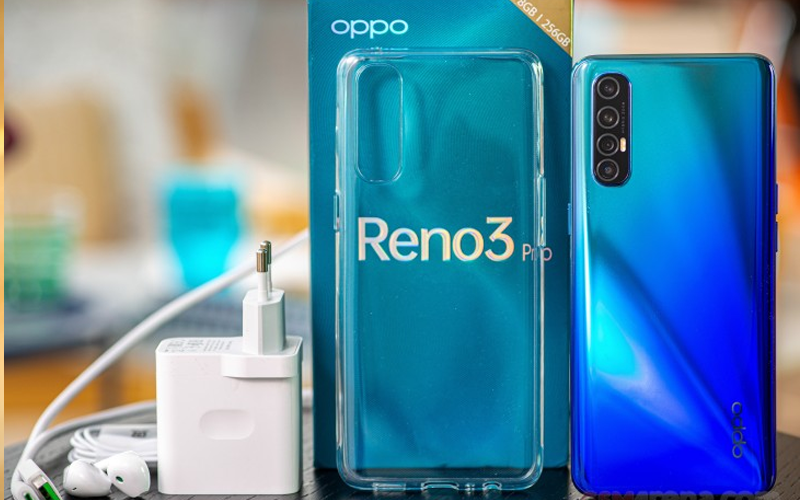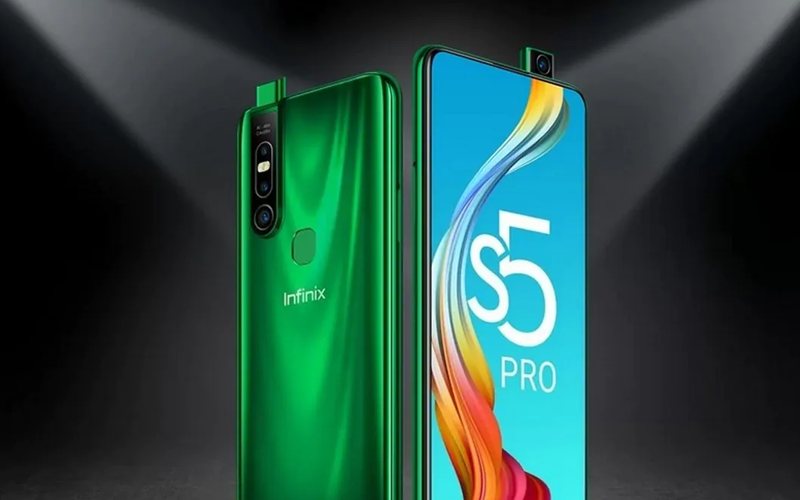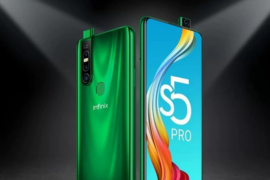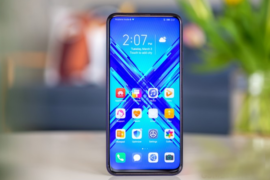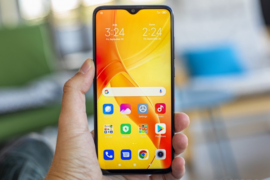SPECIFICATIONS
- Display6.4 inches
- Rear Camera16 MP/13 MP/8 MP/2 MP
- Front Camera44 MP/2 MP
- ProcessorMediatek Helio P95
- Resolution1080 x 2400
- RAM8GB
- Operating SystemAndroid 10
- Storage128GB/256GB
- Battery4025 mAh
- WaterproofYes
- Dual SimYes
- Quick ChargingYes
DESIGN
Assembled insightfully, the Oppo Reno3 Pro resembles each advanced cell phone out there – glass on the front and glass on the back held by an edge around the sides. The back board, be that as it may, isn’t genuine glass. It’s polycarbonate alongside the side edge, which is shiny as well. Possibly that is the reason the telephone feels so light. The front board is secured by Gorilla Glass 5, however.
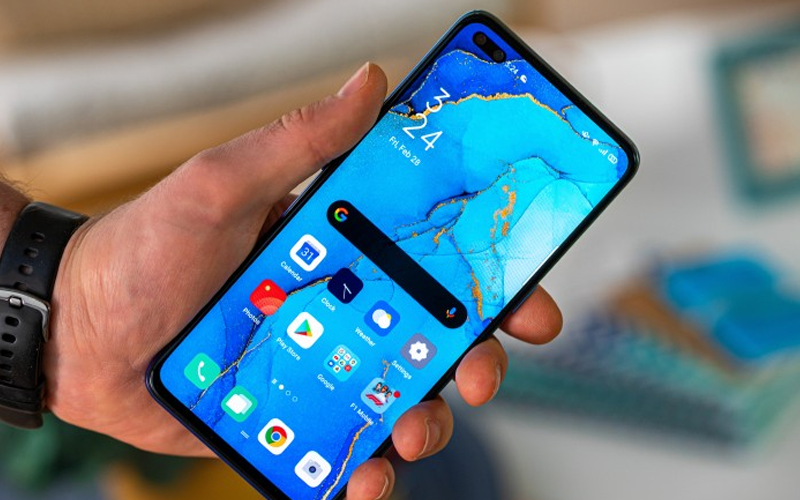
Anyway, the back sheet is sufficiently bended to give agreeable, secure hold and furthermore houses a fairly enormous protuberance with the quad-camera cluster in the upper-left corner. The module is sufficiently large to make the telephone wobble when put level on its back, and by “secure grasp,” we mean as secure as it can get given that it’s a glass sandwich cell phone. All glass sandwich cell phones are elusive. Also, with respect to the shading – we got the purported Auroral Blue. It looks cool yet pulls in a great deal of fingerprints, which remain obvious. They are anything but difficult to clear off, however.
At the point when you turn the Reno3 Pro around, you will be welcomed by a tall 6.4-inch show with a double punch-opening camera in the upper left corner. Oppo says they made it as little as could be expected under the circumstances, and we can affirm this is perhaps the littlest gap we’ve seen, however we have an alternate issue with it. We feel like it’s been set excessively far from the edge of the showcase, consuming an excessive amount of screen land. Something else, the side bezels, alongside the base lip, look stunningly slender – something you’d typically observe on a very good quality telephone. The earpiece on the top bezel can scarcely fit in the bezel – it’s so dainty.
So back to the edge, we locate the two separate volume fastens on the left joined by the SIM card plate while the correct side houses the force button. The last has a delightful mint-shaded highlight. The base is somewhat extraordinary in plan – it’s marginally recessed, with the USB-C connector in the center flanked by a 3.5mm sound jack and the amplifier grille.
With everything taken into account, it is anything but a clumsy telephone, yet it is anything but a minimal one either. Given the size of the screen, the Reno3 Pro has a not too bad impression and doesn’t gauge that much (175g). The weight appropriation isn’t perfect – it’s somewhat top-overwhelming, and you will wind up frequently going after the top piece of the telephone since it’s a tall cell phone, however that is good enough nowadays. Our solitary genuine objections remain the situation of the punch-opening and the large knock on the back.
DISPLAY
As of not long ago, Samsung was one of only a handful few, if not by any means the only, maker to offer top notch OLED boards to the normal shopper, yet nowadays, Chinese OEMs like Oppo love to spoil purchasers and you can hope to see in any event a couple of the telephones in their portfolio coming out with Samsung-made AMOLED boards. Also, the Reno3 Pro is one of those telephones.
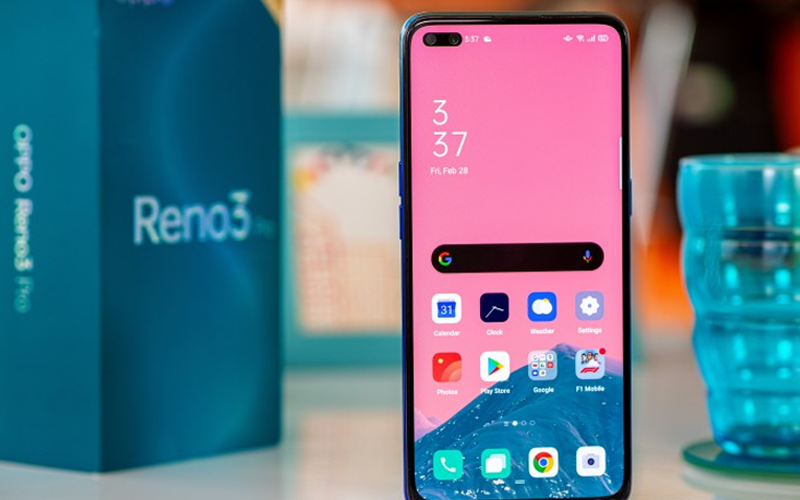
It includes a tall 20:9 Super AMOLED screen with 1080 x 2400px goals. Apparently this board flaunts particularly high most extreme brilliance effectively beating the absolute best leaders from 2019. Oppo says the board can go up to 500 nits at most extreme brilliance, and in an extremely splendid condition, the screen can support up to 800 nits. Besides, little fixes on the screen can reach up to 1,200 nits. We couldn’t check if the last case is valid, however given the outcomes we got from our standard test, we have each motivation to trust Oppo’s cases.
At its greatest brilliance, we recorded 522 nits, and when Max Auto kicked in, the board arrived at the stunning 892 nits. That is extremely splendid, and we question you will experience any difficulty utilizing the telephone on a brilliant, radiant day.
Shading exactness, then again, isn’t heavenly. Reds, blues, greens, and yellows are off – because of some boosting – and whites and grays seem somewhat blue-ish. The normal dE2000 ended up being 4.5, which proposes the screen has experienced some shading adjustment at the manufacturing plant, however we’ve seen better outcomes from aligned telephones. You can utilize the shading temperature slider to move the white point nearer to the D65 standard to tame those somewhat blue whites and grays yet other than that, the telephone doesn’t offer any extra shading presets for the showcase.
PERFORMANCE
The handset utilizes the as of late discharged MediaTek P95 chipset, which isn’t actually new as it depends on the effectively comfortable P90 chipset with a little change in the GPU office. It is said to offer a 6% support in execution, which persuades that it’s simply overclocked.
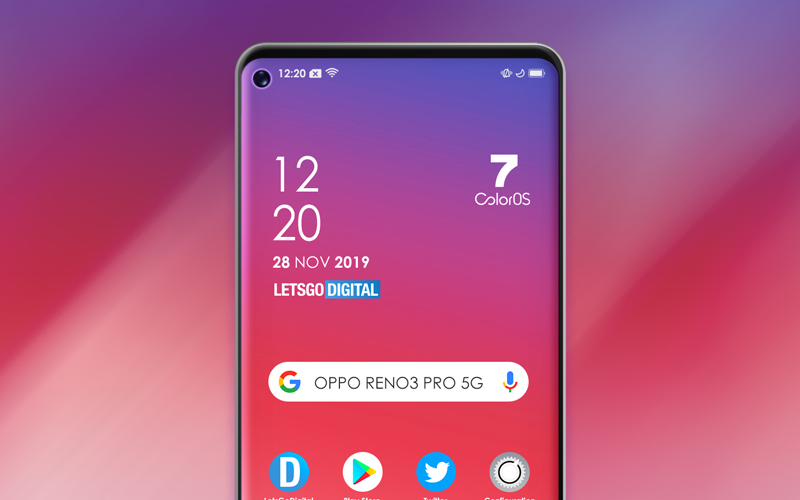
Beside that, the chipset is as yet utilizing an octa-center CPU with 2x Cortex-A75 centers running at 2.2GHz, and 6x Cortex-A55 timed at 2.0GHz. The GPU is PowerVR GM9446. What’s more, obviously, the entire stage is made on the 12nm hub.
Our specific audit unit is additionally outfitted with 8GB of RAM and 256GB of inside stockpiling, which can be extended utilizing a microSD card.
BATTERY
Apparently 4,000 mAh has become the standard go-to limit with regards to midrange telephones nowadays so we can’t state the Reno3 Pro’s 4,025 mAh battery is anything extraordinary in that regard. Be that as it may, that joined with the force effective 12nm Helio P95 chipset, has brought about out and out great perseverance from this telephone. The gadget posted incredible screen-on scores in our web perusing and video playback situations while the screen-off scores were a smidgen lower however not far-removed from astounding. With an all out score of 104h, the Oppo Reno3 Pro will presumably give as long as two days of battery continuance with typical utilization.
Charging times are similarly as great. The 4,025 mAh battery can be filled from level in simply 1:12h, indicating 67% at the 30-minute imprint, which is very acceptable. The VOOC Flash Charge 4.0-agreeable block in the container is appraised at 30W (5A/6V) and makes it probably the quickest charger in the value run.
CAMERA
The Oppo Reno3 Pro is completely furnished with all the basics one would request – a standard Quad-Bayer fundamental camera, a ultra-wide focal point, a fax cam, and an extra 2MP highly contrasting sensor. The motivation behind the last isn’t actually clear yet we think Oppo is utilizing this one for profundity data. You can’t, be that as it may, shoot with it.
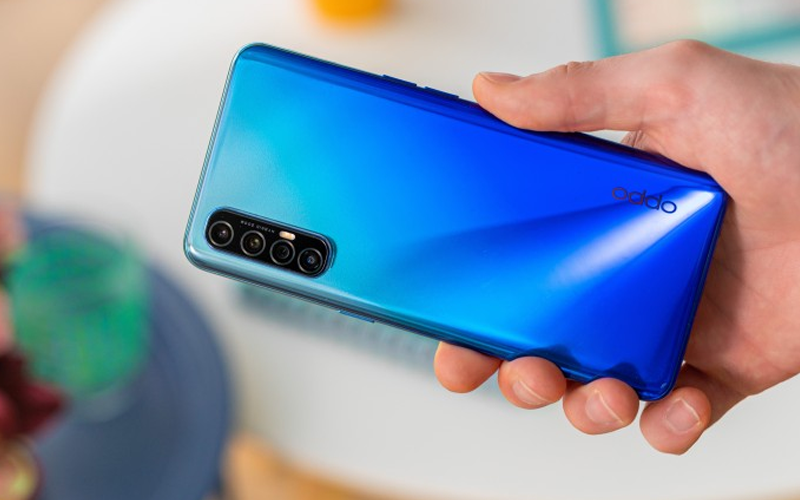
So the principle camera comprises a 64MP sensor pixel-binning down to 16MP real pictures. The pixel size is 0.8µm (1.6µm successful pixel size), the sensor size is 1/1.72″ while the focal point offers a f/1.8 gap. The fax unit utilizes a 13MP sensor combined with a f/2.4 gap, though the ultra-wide cam has 8MP goals and catches a 119.9-degree field of view.
The front couple of cameras has an irregular 44MP fundamental sensor snapping 40MP naturally while the subsequent camera is only there for profundity detecting. This should, in principle, assist production with bettering picture selfies.
The sunlight tests all look great. Truth be told, we are especially dazzled with the dynamic range the primary camera offers, and it’s adequate to challenge even top-level cell phones. Hues are punchy, yet generally exact as opposed to being excessively soaked. Detail is brilliant, commotion is basically non-existent and differentiate is incredible. There’s some edge delicate quality in the entirety of the photographs however it’s not something you should stress over.
The ultra-wide camera is likewise equipped for catching some great light stills. Normally, the degree of detail is extensively lower contrasted with the essential camera, however the interpretation appears to be comparable despite the fact that the dynamic range is only a smidgen less great and hues are far progressively immersed. This kind of preparing may appear to be all the more speaking to most clients with the exuberant hues. This camera additionally gives wonderful geometric focal point adjustment.
To be completely forthright, the evening pictures aren’t the best ones we’ve seen. The exhibition isn’t predictable, we frequently got hazy photographs, the ones that are alright are a piece on the delicate side, and there are noticeable clamor patches. Lopsided sharpness, essentially in the dreary segments, is another issue we’ve seen, maybe because of blemished picture stacking. The dynamic range, then again, appeared to be sufficient and gave us a valid justification to suggest against utilizing the Night mode.
The Night mode adds oversharpening radiances to the scene and makes the photographs look milder all in all. To top it all off, it looks as though the product has taken a few low-goals photographs, the picture stacking calculation utilized them for the last picture, and afterward they were upscaled to 16MP. There are hints of upscaling on straight lines, and the detail is a long way from the degree of the standard photographs. The main things you remain to pick up from utilizing the Night mode are the punchier hues and the reestablished shadows yet we aren’t sure if the exchange off is justified, despite all the trouble.
At long last, we get to the fax camera. Except if it’s extremely dull, the product will select utilizing the genuine fax camera – praise for that. The preparation is very like the fundamental camera, and we have similar grievances about the fax. General delicate quality and loud fixes despite the fact that the measure of settled detail is alright for a fax camera in obscurity. The Night mode will exacerbate the situation as it will mellow the pictures further, in spite of the fact that it reestablishes a few shadows to a great extent.
In spite of being a 44MP camera, the camera application defaults to 40MP goals for selfies except if you explicitly enact the 44MP mode switch in the viewfinder.
Shockingly, we were unable to recognize any huge contrasts between the 40MP and 44MP photographs. Both look truly sharp in the event that you hit the sweet spot of the camera’s fixed center separation. You can likewise expect common skin tone, punchy hues and wide unique range. Notwithstanding, the last is by all accounts an issue with the representation of selfies. Which, incidentally, don’t seem to have heavenly edge location regardless of the auxiliary profundity detecting camera. It appears as though the product could have carried out the responsibility without the assistance of a profundity detecting camera and along these lines making the punch-gap littler on the front.
The edge identification isn’t heavenly yet you do get great unique range, decent complexity, normal looking skin and a decent measure of detail. You can see a portion of the mix-ups the calculation made with stills with all the more testing foundation however in different circumstances, the bokeh-like impact is looking entirely acceptable.
The handset is fit for recording up to 2160p@30fps recordings and up to 720@240fps moderate movement recordings. Obviously, there is some EIS going on the off chance that you go for 1080p@30fps recordings however 4K needs one. Rather, Oppo is offering the Ultra Steady and Ultra Steady Pro video modes for gimbal-like adjustment however we will speak increasingly about that later.
Presently, how about we investigate the 4K recording. Hues may look a piece desaturated from the outset, however they are likewise nearer to reality. Sharpness is great, with the exception of the edge delicateness on the left. There’s likewise some clamor in uniform regions. Difference and dynamic range, then again, are acceptable.
SOFTWARE
This is our first experience with Oppo’s new UI – ColorOS 7. As Oppo guaranteed, it’s more in accordance with the stock-ish look of Android, however it despite everything offers huge amounts of customization alternatives. Regardless of what you look like at it, however, it’s as yet one of the “overwhelming” Android skins so it isn’t focused at stock Android fans, that is without a doubt.
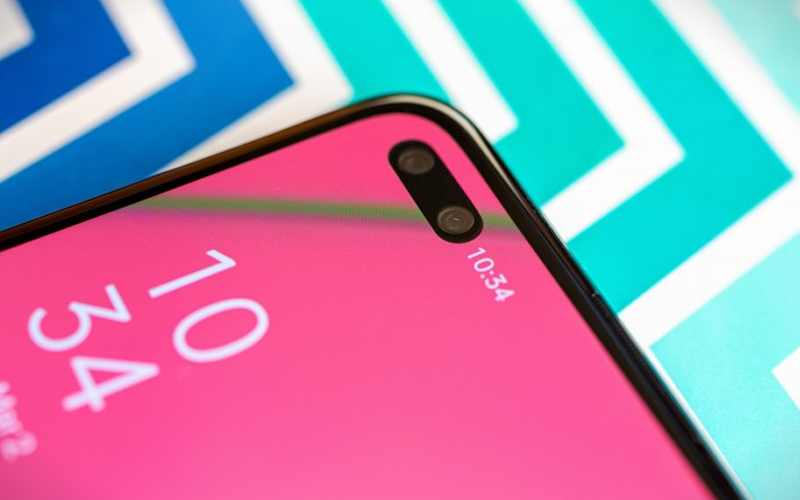
Anyway, there’s nothing uncommon about the home screen itself, however you can at present settle on the application cabinet in the event that you are an aficionado of that. Something else, the supposed Standard Mode is dynamic, showing the entirety of the introduced applications on the home screen. Talking about applications, the symbols are exceptionally adjustable, and you can tinker with the settings all you need. There are two or three preset styles, yet you can modify every single one of them by changing the style of the corners, the roundness of the symbols, the closer view, and the symbol style itself. We discover the component really flawless and simple to utilize as well.
From exactly the same menu, you can likewise change the speed of the application activity and furthermore utilize the swipe down motion on the home screen to cut down the notice conceal as opposed to arriving at all the path up to the notice bar.
Talking about the warning shade, it hasn’t been modified totally, yet the symbol style of the fast switches has been changed a piece. Rather than circles, you get oval-formed squares and gone are the various hues for the switches – they are altogether green now when it’s dynamic. We discovered irritatingly that excusing a warning possibly works while swiping the card left or right – it can’t work in the two bearings. For some odd reason, you can’t change the complement shading, either. It’s consistently green, even with the framework wide Dark Mode empowered. Which, incidentally, likewise lets you authorize Dark Mode on outsider applications as well. That last piece is still ‘In beta’ as it was in ColorOS 6.
The general settings menu has additionally experienced a few changes – all the sub-menus get their symbols, which are distinctive fit as a fiddle and hues, so it’s simpler to explore and discover what you need.
Really awful that a portion of the highlights are covered in some sub-menus which are not exactly consistently named. For instance, route motions can be found under Convenience apparatuses. What’s more, to make things significantly progressively muddled, the sub-menu is called Navigation Buttons.
For route, you get the alternative between the standard Android 10 route signals (Swipe Gestures from Both Sides), past virtual catches and More will take you to Oppo’s Swipe-up motions. They are nearly equivalent to Google’s default route signals however as opposed to swiping from the left or right bezel to return, you can swipe up from the left or right half of the base lip.
The unique mark and facial acknowledgment arrangement is entirely direct as well, yet we can’t miss applauding the under-show unique mark execution. Given that the presentation enlightens the unique mark territory in white, we are persuaded that the telephone utilizes the most recent age Goodix optical finger impression scanner. The last is additionally found on OnePlus’ most recent 7T-arrangement cell phones and other very good quality Oppo handsets.
Sadly, the unique finger impression peruser execution on the Oppo Reno3 Pro is somewhat more slow than what we’ve encountered on the better quality models and we think the more slow chipset is the one to fault. All things considered, OnePlus and the Oppo leaders utilize the altogether increasingly amazing Snapdragon 855+ chip.
A portion of the other critical highlights incorporate things like a superior mode in the battery sub-menu, a committed split-screen sub-menu for all the related settings and a Game Space include that lets you center around the game while overseeing notices and different interruptions.
ColorOS 7 is stuffed with huge amounts of highlights while doing quite well as far as day by day execution. Regardless of the substantial customization, we found that the Helio P95 chipset feels very smooth and we didn’t see any hiccups or hangs.
Should I Buy It?
The Oppo Reno3 Pro has all bases secured as extraordinary telephones should. It has a class-driving energetic and brilliant OLED; a liberal 4,025 mAh battery, which gives incredible battery life; the 3.5mm sound jack is still here; and the general camera experience is amazing even on the pre-creation programming. These cameras on the Reno3 Pro punch over its group.
Maybe the decision for chipset is the telephone’s just shaky area. The “new” Helio P95 feels somewhat obsolete and hauls behind the opposition in this market section. It has satisfactory execution for a day by day driver, and it’s bounty power-proficient, as well. It’s only that there are all the more remarkable answers at the cost as far as crude execution. With all the options offering either progressively incredible SoCs or even lead chips, the Reno3 Pro might be somewhat difficult to sell – particularly at the present value level.
Other than that, the Oppo Reno3 Pro gets our approval and in the event that you figure out how to locate a decent arrangement, it’s unquestionably worth your thought.
